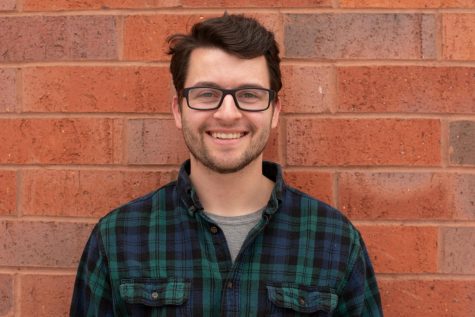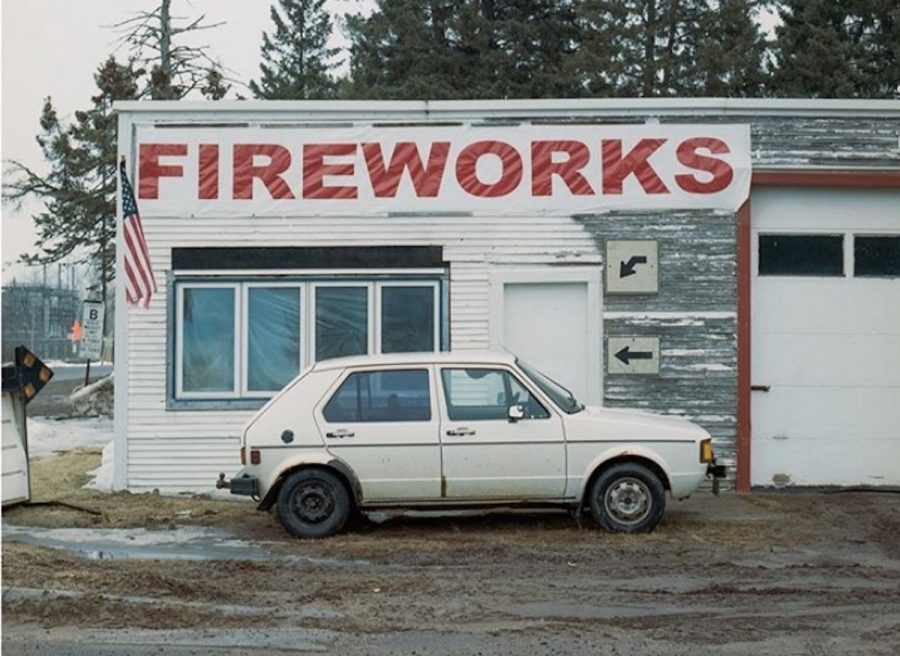Old-school ways for a timeless hobby
An insight into the world of film photography
Photo by Submitted
From Olson’s Instagram, captioned: “A print series of rural northern-Wisconsin may be my quarantine project.”
Photographers around the world have taken up digital photography for its ease of use, higher reliability and, of course, the ability to check your photo while you’re still at the scene.
What is now long forgotten by most are the days of film – taking a week to shoot a roll of 36 exposures and then having to develop it to find which ones turned out.
Personally, I try to shoot film every time I go to take pictures. Knowing I only get a set number of exposures slows me down and forces me to be careful of composition. I know I could just be careful with digital, but it is easier to just snap another one if I don’t like it.
Recently, I have taken to Instagram to find more film enthusiasts to inspire me to get deeper into the hobby — people who shoot in black-and-white, develop their own film, or even the odd scenario of shooting medium format at a wrestling tournament.
I didn’t have to search for long, as I found someone within minutes.
Jake Olson, a fourth-year journalism student and member of the wrestling team, enjoys shooting film — yes, even medium format at wrestling tournaments. After sending him a direct message to get to know more about him, I have grown my range of what I do in photography a lot.
I work at Sharp Photo and Portrait. It is a local print lab and film processing store, along with a bunch of other things like studio photography and canvas printing.
I started shooting more film back in October because it was cheap and I could develop and scan it while I was at work. I didn’t get too into it, but I certainly got more into it than I had been before.
About a month ago, I got laid off due to the pandemic. It was not ideal, but I am not complaining. I totally get it and I am fortunate enough to have another job which is essential. But this isn’t about that.
After all the free time we received in the past month, I kept seeing Olson post to his story on Instagram — probably more than normal.
What really got me excited about the possibilities in film was when he had a whole story dedicated to how he develops and scans his film using a developer solution, timing the agitation of the solution and all those little steps.
Watching his story took me back to being a little kid and sitting in the darkroom with my dad while he developed his prints. You can develop film in the daylight for the most part, but my dad always did prints, too, which require a darkroom.
I had always shied away from developing my own film because I didn’t want the hassle of hazardous chemicals, the smell of them when you use them and having to hang film in the shower to dry. But seeing Olson’s story, I knew I had to try it out.
Film photography has that characteristic to it. It is at times odd to explain, but the best analogy I have come up with is that it has a loyal user base. Just like fans of Formula 1 or even World Wrestling Entertainment, people will be loyal for a long time.
Olson said, for him, photography started as a way to capture the outdoors.
Olson said he remembers seeing sunrises and, on multiple occasions, saying: “Wow, I wish I could remember that.”
Eventually, he ended up getting a cheap action camera and was able to remember those moments through photographs.
Olson said when his grandfather died and his grandmother asked him if he wanted to look through his photography collection. Olson hadn’t known about this collection but decided to give it a look.
“He actually shot (film) in Vietnam when he was drafted and deployed,” Olson said. “I was sorting through negatives for hours and hours and I decided to try film for myself.”
He said one of his favorite things is to shoot medium format film at wrestling tournaments, just because no one else does.
Olson went on to talk about medium format and the history of photographers like Vivian Maier and Robert Frank. Specifically, how they captured daily life in time capsules of film negatives and books.
Olson plans to someday capture this goal of preservation in film negatives, hopefully leading to a book of his own. He said he thinks of Eau Claire as a wild dynamic of rural and college land and people and he wants to be able to show something when people ask him what it was like.
But, for now, you can just follow him on Instagram @jakeolsonphoto.
Seward can be reached at Sewardwv9140@uwec.edu.

Will Seward is a fourth-year creative writing major, minoring in physics and chemistry. Alongside The Spectator, he is also a co-host for Blugold Radio Sunday's shows: Blugold Literary Broadcast and How'd You End Up Here? Outside of these roles, he enjoys typewriters, photography and petting dogs.

